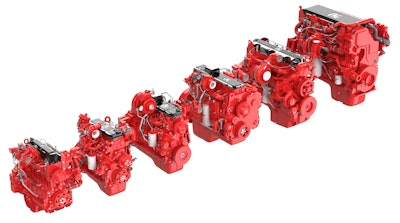
It will not have escaped you that diesel prices, as with other fuels, have surged across the globe since the beginning of the year. Despite being the world’s biggest oil producer, the average cost of a gallon of diesel in the U.S. increased almost 60% from January to June. Unfortunately, prices don’t look likely to fall anytime soon.
Although operators may rightly feel like hostages to the global oil market, there are measures that they can implement to meaningfully reduce fuel consumption, as well as decrease emissions and maximize their return on investment.
1. Minimize Idling
It goes without saying that idling wastes fuel, regardless of how efficient the engine is. Yet despite this, it’s often a common practice (we’ve all seen operators eating their lunch in an idling machine). So, by simply killing the engine when it’s not in use, operators can save fuel, as well as reduce emissions and unnecessary wear on components.
If the machines have timed idle shut-off or stop-start capability, this should be switched on. Cummins offers stop-start on its Performance Series engines and in real-world trials, we’ve seen it deliver fuel savings of 10% compared to standard engines.
Stop-start systems also don’t compromise engine life as they tailored specifically to the duty cycles of the machine and operation, and there are limits on the number of stop-starts per hour, unlike a car.
2. Don’t ignore the service light…
Understanding and following recommended maintenance schedules is critical to ensure that equipment gives optimum performance. Poorly-maintained machines will use more fuel for the same amount of work as a well maintained one. Preventive maintenance also saves major repairs in the long term, maximizing the productivity and life of the engine.
3. Follow Manufacturer’s Recommendations
A no-brainer, but something that is often ignored. Follow the OEM’s recommendations to ensure that correct fluids (such engine, hydraulic and axle oil) are used and kept at the required levels.
Additional checks on the cleanliness of radiators, radiator screens and air filters, as well as having the correct tire air for the intended job, are also important to deliver optimal fuel efficiency.
 Follow the OEM’s recommendations to ensure that correct fluids (such engine, hydraulic and axle oil) are used and kept at the required levels.Cummins
Follow the OEM’s recommendations to ensure that correct fluids (such engine, hydraulic and axle oil) are used and kept at the required levels.Cummins
4. Monitor Your Machines
Many newer machines come with monitoring facilities as standard. By analyzing their data, operators can find operational efficiencies by understanding how equipment is being used, such as excessive idling or aggressive use of the throttle. Monitoring also helps to detect potential service problems in advance and reduce repair costs and downtime.
5. Consider Modernizing Your Fleet
As always, there is a balance to be struck between capital and operational expenditure, but the high cost of fuel may just tip the scales toward the former for some operators with older, less efficient equipment.
By purchasing new, or newer, machines, operators can reap the benefit of diesel engine technologies that have been pushed higher up their evolutionary ladder, getting increasingly fuel efficient, reliable and cleaner.
6. Use Trained Operators, Deploy Them Correctly
It’s worth investing time, money and effort in training staff for the equipment they operate. Poorly-trained staff will likely be more aggressive when using the machine, increasing fuel consumption. As monitoring capability develops, the data gathered will be able to help improve operator training.
7. Use Eco Mode
Can the work be done in Eco mode? Although many operators dismiss Eco mode (or downright hate it) the mode will automatically reduce engine speed and save fuel. Try it.
Although fuel costs look likely to persist for the immediate future, the above measures demonstrate that operators can practically and meaningfully reduce their fuel costs in the short and long term.


















